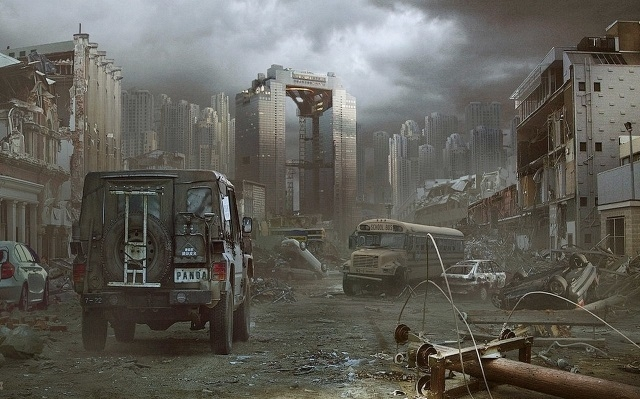70+ Essential Items to Stock Up On Before Store Shelves Are Empty
What should you stock up on for tough times? Which supplies are worth keeping, and what items will be indispensable during emergencies or any crisis? Below is a list of products that will disappear first and are best to buy in advance and store. This list has been updated and expanded by our subscribers.
Food
- Don’t forget to rotate your supplies. Use up items that are nearing their expiration date.
- Bottled water — will run out almost immediately.
- Grains: rice, buckwheat. Store in plastic containers in dark places.
- Pasta.
- Oats — lightweight and can be stored for decades.
- Beans, lentils.
- Canned meat.
- Sugar, salt.
- Honey.
- Tea, coffee.
- Condensed milk.
- Canned goods — from fish to fruit. People will grab these off the shelves regardless of the label.
- Dried vegetables (buy or dry them yourself).
- Dried meat (buy or dry it yourself).
- Spices.
- Vitamins.
- Alcohol (spirits, vodka).
- Vegetable oil. When you’re living off grains and foraged foods, this often becomes the only source of fats.
- Flour, dry yeast, powdered eggs. Without bread, even with plenty of meat, you’ll start to feel chronically hungry after a couple of months. All these ingredients can be used together or separately.
Hygiene
- Plenty of soap, preferably laundry soap. It can replace all shampoos, scrubs, and gels.
- Women’s hygiene essentials: tampons, pads.
- Baby hygiene if you have children: gauze, diapers.
- Disposable razors.
- Toilet paper.
- Condoms.
Household Supplies
- Candles. Lots of candles.
- Gasoline.
- Paracord, ropes.
- Work gloves, plenty.
- Large construction garbage bags.
- Disposable grocery bags (sold in rolls).
- Household respirators.
- Reusable fire starters.
- Awl, needles, thread.
- Foil (see 13 ways to use foil).
- Disinfectants: bleach, cleaning agents, etc.
- Stiff-bristled brushes. They’re cheap, last long, and can’t really be replaced with makeshift alternatives. Use them to clean tents, clothes, even animals.
- Construction-grade polyethylene film, in rolls or by the yard (useful both at home and on the go: cover broken windows, protect belongings from moisture, etc.).
Communication & Electronics
- Walkie-talkies, at least 2. For group communication while moving, between camp and scouts, or during search and rescue operations.
- Headlamps with batteries.
- Batteries, power banks.
- Compact solar chargers or foldable soft panels for charging power banks.
- Navigation tools: GPS device, printed maps, compass, and the skills to use them.
Medicine
For proper first aid kit assembly, see other articles. The main thing is to stock up based on your family size and preferred medications. Don’t forget:
- Bandages and dressings.
- Alcohol.
- Aquatabs for water purification when boiling isn’t possible.
- Rehydration salts.
- Remedies for poisoning and diarrhea.
- Tourniquet and the knowledge to use it.
- Surgical instruments (strictly in case you meet someone who knows how to use them and can provide help if tools are available).
Cash (Withdraw from Cards)
- Have cash on hand in case electronic payment systems go down.
Tools
- Knife, axe, saw.
- Screwdrivers, hammer, other hand tools.
- Sharpening tools for knives and saws.
- Blue electrical tape.
- Duct tape.
- Simple can opener (no need to ruin your knives).
Hunting & Self-Defense
- Weapons, if you don’t have any. Medical check, one-day course, state fee, and license in hand. Not too difficult (for now). Prefer simple and compact weapons, like a double-barrel or a semi-automatic like a Saiga.
- Ammunition. More is better.
- Tools and components for reloading ammo and casting shot.
Gear
In case you need to evacuate or wait for help without shelter:
- Backpack: 120 liters for men, up to 80 liters for women.
- Tent big enough for you, your kids, and your spouse.
- 3×3 meter tarp, especially if you’re solo and traveling light.
- Sleeping bags for all family members.
- Raincoats and backpack covers.
- Two camping pots, each half a liter per person. For a group of 10, 10-liter pots are enough. Pots often nest inside each other, saving space. For example, a 3-liter pot fits inside a 5-liter, a 6-liter inside an 8-liter, and so on.
- Cup, spoon, bowl, and knife for each family member.



